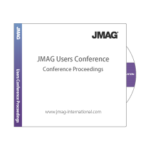Noda Shinichi
Toshiba Corporation
Abstract
Recently, the demand of resolving noise issues is increasing as a result of growing concern about environmental problems. Meanwhile, as electric vehicles are becoming more popular, noise reduction on electric motors which are the major noise source of various electrical equipments such as electrical home appliances and medical equipment, have become a necessity.
Countermeasures for motor vibration and noise including (1) electromagnetic force acting as the excitation force, (2) motor structures of transmission systems, and (3) vibration transferred to other mechanical equipment are necessary. In other words, reduction of motor noise requires sufficient understanding of mechanism causing the noise and the structure transferring the vibration. The electromagnetic force mode of electromagnetic noise and its frequency are described in simple terms. The structural characteristics of motors, specifically the measurement of mechanical natural frequencies and finite element simulations that are applicable in actual analysis work, will be explained.
You need to sign in as a Regular JMAG Software User (paid user) or JMAG WEB MEMBER (free membership).
By registering as a JMAG WEB MEMBER, you can browse technical materials and other member-only contents for free.
If you are not registered, click the “Create an Account” button.
Create an Account Sign in



